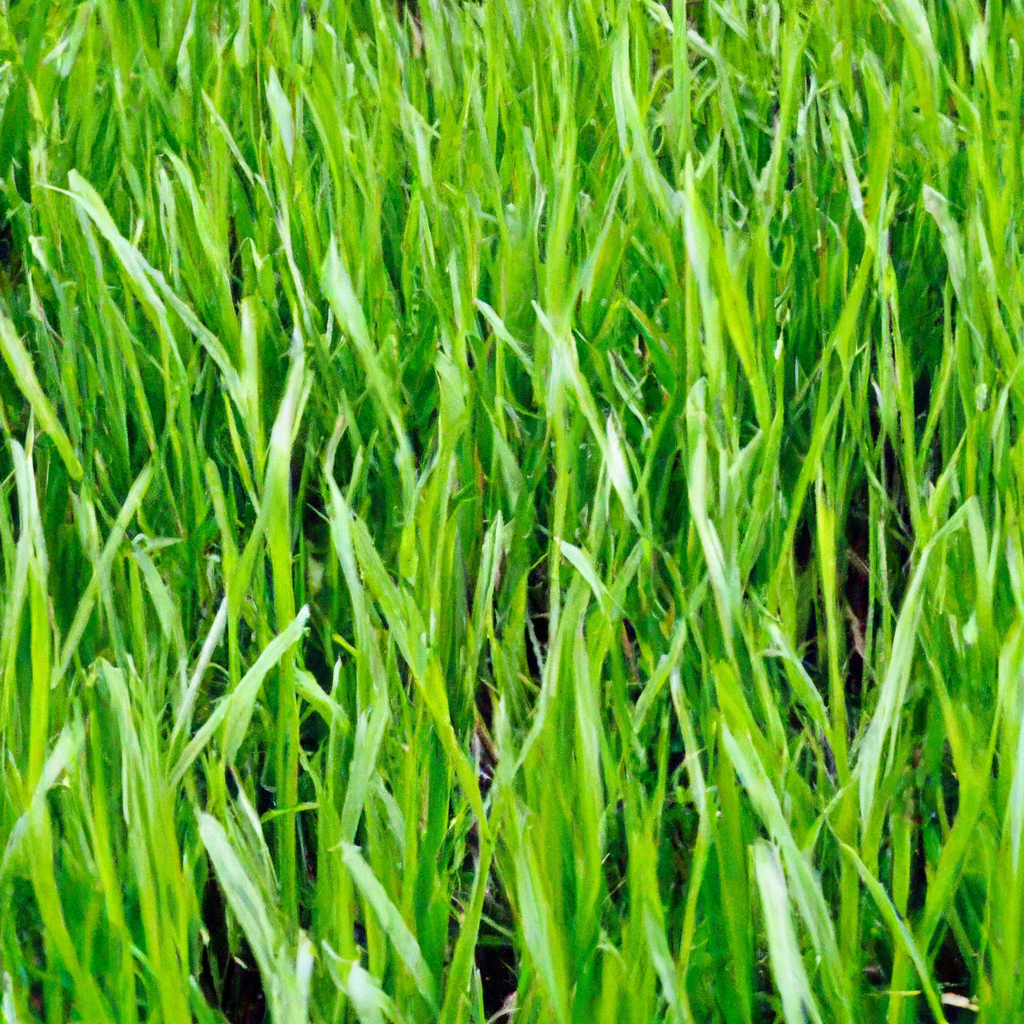If you’re tired of pesky weed patches taking over your garden, then it’s time to explore organic solutions. In this article, we’ll delve into the world of natural remedies that can help you regain control over those unruly plants. From simple household ingredients to eco-friendly products, we’ve got you covered. Say goodbye to chemical-based herbicides and hello to a greener approach to weed control. So grab your gardening gloves and let’s dive into the world of organic solutions!
Understanding Weed Patches
Definition of Weed Patches
Weed patches are areas in your garden or agricultural fields where an abundance of weeds grow together, forming a concentrated and unsightly cluster. These patches often consist of various types of weeds, and if left unchecked, can eventually overrun your crops or garden beds.
Types of Weeds
Weeds in weed patches can be broadly categorized into three types: annuals, perennials, and biennials. Annual weeds complete their life cycle within a year, while perennials persist year after year. Biennial weeds have a two-year life cycle, typically growing foliage in the first year and producing flowers and seeds in the second.
Some common examples of annual weeds include crabgrass, foxtail, and chickweed. Perennial weeds, on the other hand, include plants such as dandelions, thistles, and bindweed. Understanding the types of weeds in a weed patch is crucial for effective weed control.
Causes of Weed Patches
There are several factors that can contribute to the formation of weed patches. One common cause is poor soil health, which may lack essential nutrients, leading to weak crop growth and an open invitation for weeds to take over. Additionally, the presence of weed seeds in the soil or the introduction of weed seeds through wind, animals, or contaminated soil can also lead to the formation of weed patches.
Another factor that can contribute to weed patch formation is improper watering and irrigation practices. Overwatered or poorly drained soil creates an environment favorable for weed growth and can result in concentrated patches.
Impact of Weed Patches
Weed patches can have a significant negative impact on your garden or agricultural fields. Weeds compete with crops for sunlight, water, and nutrients, limiting their growth and productivity. They can also harbor pests and diseases, further compromising the health of your plants.
In addition to the direct impact on crop yield and quality, weed patches can also diminish the aesthetic appeal of your garden or landscape. They can make it difficult to navigate and maintain your outdoor space, and may even negatively affect the value of your property.
Advantages of Organic Weed Control
No Harmful Chemicals
One of the key advantages of organic weed control methods is that they eliminate the need for harmful chemicals, such as synthetic herbicides. Traditional herbicides often contain toxic ingredients that can persist in the environment, posing risks to human health, animals, and beneficial insects. By opting for organic weed control, you can create a safer and healthier environment both for yourself and the ecosystem.
Environmental Benefits
Organic weed control practices have numerous environmental benefits. By avoiding the use of synthetic herbicides, you prevent the contamination of soil, waterways, and groundwater with harmful chemicals. This helps preserve biodiversity and maintain the delicate balance of ecosystems.
Additionally, organic methods promote soil conservation and reduce erosion. They encourage the growth of beneficial organisms and microbes in the soil, improving its structure, fertility, and overall health. By adopting organic weed control strategies, you contribute to the long-term sustainability of your garden or agricultural practices.
Health Benefits
Choosing organic weed control methods also benefits your health. Exposure to synthetic herbicides has been linked to various health issues, including respiratory problems, skin irritations, and even certain types of cancers. By avoiding these chemicals, you reduce the risk of negative health effects for yourself, your family, and anyone else who may come into contact with your garden.
Furthermore, organic weed control methods often involve physical activity, such as hand weeding or cultivating the soil. These activities provide valuable exercise and can contribute to your overall physical well-being.
Maintaining Soil Fertility
Organic weed control methods focus on building and maintaining healthy soil. By nourishing the soil with organic matter, such as compost or cover crops, you enrich its nutrient content and improve its structure. This boosts the overall fertility of your soil, which in turn promotes the growth of your desired plants and helps to suppress weed growth.
By avoiding synthetic herbicides that can harm soil microorganisms, organic weed control methods preserve the intricate web of beneficial organisms that contribute to soil health. This helps create a balanced and thriving ecosystem in your garden.

Identifying Weed Patches
Visual Characteristics
Weed patches can be visually identified by various characteristics. Weeds in these patches often exhibit rapid and dense growth, forming a tangled mass that can suffocate surrounding plants. The color and shape of the foliage can vary between different types of weeds, making it easier to identify the specific weeds present in the patch.
Additionally, weed patches may have distinct flowering periods and produce seeds, which can aid in their identification. Taking note of the visual characteristics of a weed patch can help you choose the most appropriate control methods to effectively manage and eliminate the weeds.
Weed Patch Locations
Weed patches can occur in a variety of locations, ranging from vegetable gardens to lawns and flower beds. They often thrive in areas with poor soil health or inadequate sunlight. Common locations for weed patches include unkempt garden corners, edges of driveways or walkways, and areas near sources of water, where weed seeds may have been deposited.
Identifying the specific locations where weed patches tend to form in your garden or landscape can help you develop targeted weed control strategies to prevent their recurrence.
Weed Patch Size
The size of weed patches can vary greatly, from small clusters in a garden bed to large areas in agricultural fields. The dimensions of a weed patch can influence the ease of control and the choice of appropriate weed control methods.
Smaller weed patches can often be managed through manual or mechanical methods, while larger patches may require more extensive interventions. Regular monitoring and early detection of weed patches are key to preventing their growth and spread.
Weed Patch Density
Weed patch density refers to the closeness and concentration of weeds within a given area. Dense weed patches can be particularly problematic, as weeds compete more intensively with crops or desired plants for essential resources.
The density of a weed patch can be evaluated by counting the number of weeds per unit area or visually assessing the level of coverage within a designated space. High-density weed patches may require a combination of control methods to effectively manage and eliminate the weeds.
Preventive Measures to Minimize Weed Patches
Mulching
Mulching is a preventive measure that involves covering the soil surface with a layer of organic or inorganic material. Mulch acts as a physical barrier, preventing weed seeds from germinating by blocking sunlight and reducing their access to essential resources.
Organic mulches, such as straw, wood chips, or shredded leaves, serve the dual purpose of weed suppression and soil enrichment as they break down over time. Inorganic mulches, such as plastic sheeting or landscape fabric, also provide effective weed control by preventing weed seed germination.
Proper Soil Preparation
Proper soil preparation is key to minimizing the formation of weed patches. Clearing the area of existing weeds, roots, and debris before planting can help eliminate potential sources of weed seeds.
Amending the soil with organic matter, such as compost or well-rotted manure, improves soil fertility and structure, creating favorable growing conditions for your desired plants. Well-prepared soil also facilitates root growth, which helps plants compete more effectively with weeds for nutrients and moisture.
Crop Rotation
Implementing a crop rotation plan can help break the cycle of weed growth and reduce the risk of weed patches forming. By alternating the types of crops grown in specific areas, you disrupt the life cycles of weed species that may have adapted to thrive in your garden or fields.
Additionally, different crops have varying root depths and nutrient requirements. This variation can help optimize the use of available resources and limit weed growth, reducing the likelihood of extensive weed patches.
Weed-Free Seeds and Seedlings
Using weed-free seeds and seedlings is an essential step in preventing weed patches. Weed seeds can easily be dispersed through contaminated seeds, soil, or compost. Therefore, it is crucial to obtain seeds and seedlings from reputable sources that guarantee freedom from weed contamination.
In addition to purchasing certified weed-free seeds, you can also minimize the risk of introducing weeds by carefully inspecting and cleaning seeds before sowing. This extra effort ensures that your crops are not competing with weed seeds already present in your soil.
Regular Maintenance and Monitoring
Regular maintenance and monitoring play a critical role in minimizing the formation of weed patches. By consistently inspecting your garden or fields, you can detect and address weed issues in their early stages before they become overwhelming.
Prompt removal of any emerging weeds, by either pulling them out or cutting them close to the ground, helps prevent seed production and limits weed spread. Regularly tending to your plants, providing necessary support, and maintaining optimal growing conditions also strengthen your crops’ resilience against weeds.

Mechanical Methods of Weed Control
Hand Weeding
Hand weeding is a physical method of weed control that involves manually pulling out weeds by their roots. Although labor-intensive, hand weeding is an effective way to selectively remove weeds without harming your desired plants.
To maximize the efficacy of hand weeding, it is important to grasp weeds close to the soil surface and remove the entire root system. Regular and thorough hand weeding can help prevent weed patches from forming and keep your garden or fields weed-free.
Tilling and Cultivation
Tilling and cultivation are mechanical methods that disrupt weed growth by disturbing the soil and cutting off weeds from their root systems. These methods are particularly effective for annual weeds with shallow root systems.
Tilling involves turning over the top layer of soil, burying surface weeds and exposing their roots to desiccation. Cultivation refers to breaking up the soil around your crops, severing the roots of weeds and preventing their growth.
However, it is important to exercise caution when using these methods, as excessive or improper tillage can cause soil erosion and damage beneficial soil organisms. These methods are most effective when used in combination with other weed control techniques to ensure long-term success.
Mowing and Cutting
Mowing and cutting are commonly used methods to control tall weeds and prevent them from going to seed. By regularly trimming down weed foliage, you limit their ability to photosynthesize and reproduce, gradually weakening and eliminating them.
For best results, mowing or cutting should be done before seed production occurs or when the weeds are in their early growth stages. It is important to ensure that cutting equipment is properly adjusted to achieve a low cutting height and prevent regrowth.
Flame Weeding
Flame weeding is a specialized mechanical method of weed control that utilizes intense heat from flame-emitting devices to eliminate weeds. By rapidly heating the foliage of weeds, flame weeding causes the cell tissues to rupture, effectively killing them.
This method is most effective for controlling annual weeds and can be particularly useful in areas where herbicides are not suitable, such as near water sources. Flame weeding should be done with caution, following safety guidelines and ensuring that the flame is directed only at the weeds to avoid accidental fires.
Natural Weed-Suppressing Techniques
Cover Crops
Cover crops, also known as green manure, are plants deliberately grown to suppress weed growth and improve soil health. These crops are typically fast-growing and competitively shade out weeds, blocking their access to sunlight and resources.
Legumes, such as clover or vetch, have the added benefit of fixing atmospheric nitrogen, enriching the soil’s nutrient content. When cover crops are incorporated into the soil through tillage or natural decomposition, they contribute organic matter, improve soil structure, and provide a head start for your desired plants.
Solarization
Solarization is a natural technique that utilizes the sun’s heat to control weed growth and eliminate weed seeds and pathogens in the soil. This method involves covering the soil with clear plastic sheets, trapping the sun’s energy underneath and raising soil temperatures to levels that are lethal to weeds.
To effectively solarize the soil, it is best to do it during the warmest months of the year when sunlight and heat intensity are at their peak. The plastic sheeting should be left in place for at least six to eight weeks, allowing sufficient time for heat to penetrate the soil and suppress weed growth.
Smothering
Smothering is a simple and effective technique that involves depriving weeds of sunlight and airflow by covering them with organic materials. This method employs materials like cardboard, newspaper, or mulch, which create a barrier that inhibits weed germination and prevents their growth.
To smother weeds, start by clearing the area of any existing weeds or vegetation. Next, lay down a thick layer of organic materials, ensuring complete coverage. Over time, the organic materials will break down, enriching the soil and providing continued suppression of weed growth.
Livestock Grazing
For larger areas or agricultural fields, livestock grazing can be an effective natural weed control method, particularly for perennial weeds. Animals such as goats or sheep are known to selectively graze on weeds, helping to control their growth while providing additional benefits such as fertilization through manure.
However, it is essential to carefully manage grazing to prevent overgrazing and harm to desired plants. Rotational grazing, where animals are periodically moved to different areas, can help balance weed control with optimal pasture management.

Chemical-Free Weed Killing Solutions
Vinegar and Citric Acid
Vinegar and citric acid are natural and environmentally friendly alternatives to synthetic herbicides. Their acidic properties can effectively desiccate and kill weeds by disrupting their cell membranes.
To use vinegar or citric acid as a weed-killing solution, simply apply the undiluted liquid directly onto the foliage of the weeds. Take care to avoid contact with your desired plants, as these solutions can harm or kill them as well. It is important to note that these solutions may be less effective on well-established perennial weeds.
Salt
Salt can be an effective weed killer when used judiciously and in targeted applications. Salt works by dehydrating the plants, effectively drying them out and preventing their growth.
To use salt as a weed-killing solution, mix it with water to create a concentrated saltwater solution. Use caution when applying salt, as it can have long-lasting effects on soil health and may also harm nearby plants. Targeted spot applications on the foliage of weeds are often more effective and minimize potential damage to desired vegetation.
Boiling Water
Boiling water is a simple and natural method to kill weeds that grow in walkways, cracks, or other hard surfaces. This technique uses the intense heat of boiling water to scald the weeds, effectively destroying their cell structures.
To apply boiling water to weeds, carefully pour it directly onto the foliage, taking care to avoid contact with your skin or desirable plants. Boiling water is most effective when applied on a sunny day, as the heat from the sun enhances the overall effect.
Corn Gluten Meal
Corn gluten meal is a natural byproduct of the corn milling process that can serve as an effective pre-emergent herbicide. When applied to the soil, it inhibits the germination of weed seeds, preventing them from developing into mature weeds.
To use corn gluten meal, spread it evenly over the soil surface at the recommended application rate. It is important to apply the corn gluten meal before weed seeds have germinated, as it primarily works as a preventive measure rather than a post-emergent control method.
Application of Organic Herbicides
Choosing the Right Herbicide
When choosing an organic herbicide, consider the specific weeds you are targeting and the crops or plants you wish to protect. Different organic herbicides are formulated to target specific weed species, so selecting the appropriate herbicide ensures effective control while minimizing harm to desired vegetation.
Reading and following the label instructions is critical when using any herbicide, organic or otherwise, to ensure safe and effective application. It is important to carefully assess the potential risks and benefits of any herbicide before use.
Proper Timing
Timing is crucial when applying organic herbicides. Most organic herbicides are most effective when applied to young, actively growing weeds. Waiting too long to apply the herbicide may result in reduced efficacy, allowing weeds to establish themselves further.
Additionally, be mindful of weather conditions when applying organic herbicides. Rainfall shortly after application can reduce the effectiveness of the herbicide, while hot and dry conditions may enhance its efficacy.
Application Techniques
When applying organic herbicides, it is important to use proper application techniques to maximize effectiveness. Ensure thorough coverage of the weed foliage, paying close attention to the undersides of leaves and hard-to-reach areas.
For spot treatments, use a targeted application method such as a spray bottle or a shielded applicator to prevent overspray and minimize contact with desirable plants. When treating larger areas, consider using backpack sprayers or larger equipment to ensure efficient and comprehensive coverage.
Safety Considerations
Always prioritize safety when handling and applying any herbicide, organic or synthetic. Wear protective clothing, such as gloves, long sleeves, and pants, to prevent skin exposure. Use eye protection and follow proper respiratory protection guidelines if required.
Take care to avoid inhaling or ingesting herbicides, and wash your hands thoroughly after handling them. Store herbicides securely, away from children, pets, and food products.

Integrating Pest Management
Companion Planting
Companion planting is a strategy that involves growing compatible plants together to help control pests and suppress weed growth. Certain plants have natural pest-repellent properties or release chemicals that deter pests, making them effective companions for specific crops.
When selecting companion plants, consider their ability to deter pests that may target your desired crops. Additionally, choose plants that have different growth habits or structures to help impede weed growth and maximize space utilization.
Biological Control
Biological control methods involve using natural predators, parasites, or pathogens to manage pests and maintain weed populations. For example, certain insects, such as ladybugs or lacewings, feed on aphids and other pest insects, reducing their numbers and limiting the need for chemical intervention.
For weed control, introducing livestock, such as goats or sheep, that selectively graze on weeds can be an effective biological control method. By allowing natural processes to take place, you harness the power of nature to maintain a balanced and harmonious ecosystem.
Attract Beneficial Insects
Attracting beneficial insects to your garden or agricultural fields can help control pests and reduce weed growth. Beneficial insects, such as ladybugs, hoverflies, or parasitic wasps, feed on pests or their eggs, providing natural pest control.
You can attract beneficial insects by planting a diverse range of flowering plants that provide nectar and pollen throughout the growing season. Additionally, providing shelter, such as insect hotels or brush piles, creates habitats for beneficial insects to live and reproduce.
Pruning and Thinning
Pruning and thinning plants can help manage pest populations and minimize weed growth. Removing dead or diseased plant parts eliminates potential hiding places for pests and reduces the risk of pest infestations.
Thinning overcrowded crops or plants improves air circulation, reducing the risk of diseases that can weaken plants and make them more susceptible to weed competition. Proper pruning and thinning techniques also encourage stronger plant growth and optimize light penetration, aiding in weed prevention.
Long-Term Strategies for Weed Control
Improving Soil Health
Improving soil health is a long-term strategy for effective weed control. Healthy soil supports vigorous and robust plant growth, allowing crops or desired plants to effectively compete with weeds for resources.
Amending the soil with organic matter, using cover crops, and minimizing soil disturbance through techniques like no-till farming contribute to the long-term improvement of soil health. Maintaining proper soil pH, fertility, and moisture levels also create an environment that is less favorable for weed growth.
Regular Crop Rotation
Regular crop rotation is an important practice for preventing weed patches and maintaining soil health. Rotating different crops in designated areas disrupts the life cycles of weeds, pests, and diseases that may have established themselves in a particular crop.
Additionally, different crops have varying nutrient requirements, reducing the risk of nutrient depletion and nutrient imbalances that can contribute to weed growth. Crop rotation also helps break weed cycles by employing cultivation practices specific to different crops, suppressing weed competition and reducing weed populations over time.
Mulching and Weed Barrier
Mulching and using weed barrier materials provide long-term weed suppression by creating physical barriers that obstruct weed growth. Mulch provides several benefits, such as conserving soil moisture, moderating soil temperature, and preventing weed seed germination and growth.
Weed barrier materials, such as landscape fabric or geotextiles, function similarly to mulch by preventing sunlight from reaching weed seeds and smothering weed seedlings. These materials are particularly useful in garden beds or areas where a more permanent weed control solution is desired.
Consistent Maintenance Practices
Consistent maintenance practices are essential for long-term weed control. Regular weeding, cultivating, and monitoring help prevent weed patches from forming and keep your garden or fields weed-free.
Incorporate a schedule for regular maintenance tasks, such as weeding and inspecting your plants for pests or diseases, into your gardening routine. This consistent care allows for early detection and intervention, minimizing the need for more extensive weed control measures.
In conclusion, understanding weed patches is crucial for effectively controlling weed growth and maintaining a healthy garden or agricultural field. Organic weed control methods offer numerous advantages, including the elimination of harmful chemicals, environmental benefits, and health benefits. By identifying weed patches and implementing preventive measures, mechanical methods, natural weed-suppressing techniques, and chemical-free weed-killing solutions, you can manage and eliminate weeds in an environmentally friendly manner. Integrated pest management, long-term strategies such as improving soil health and regular crop rotation, and consistent maintenance practices are also key components of successful weed control. Embracing organic solutions and employing a holistic approach will help you achieve a weed-free and thriving outdoor space.

